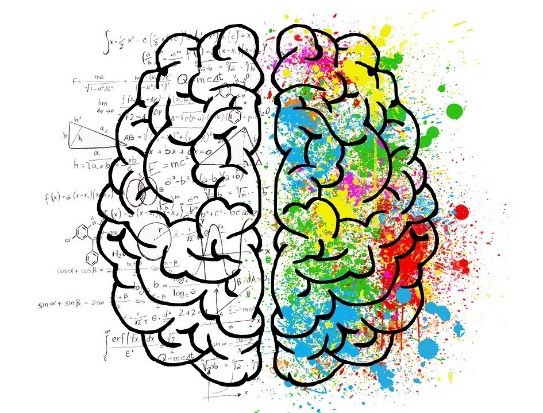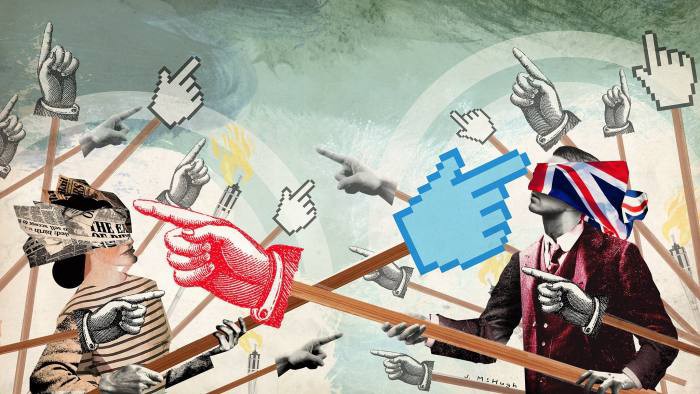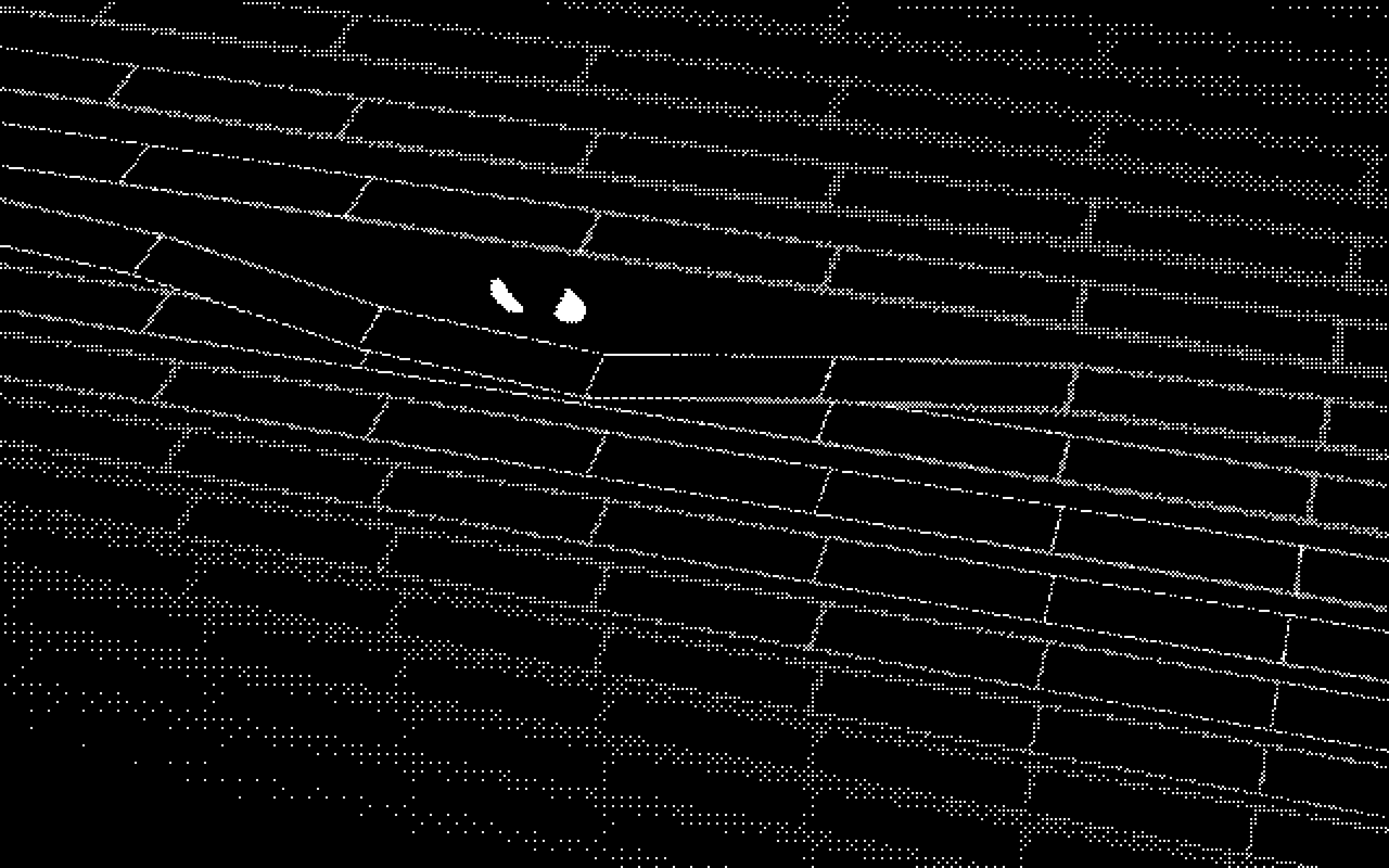In the past, I’ve discussed the collective brain. How each individual human represents a neuron or node in a larger information and sensory-processing system. The evidence for this bottom-up system is all around us: human societies coming up with the same solutions to certain material problems over and over again (see: plant and animal domestication, intensive agriculture, and money), and multiple “nodes" in the collective brain tending to come up with the same innovations in clusters (see: Charles Darwin and Alfred Russel Wallace, just one of countless examples).
But for all the benefits of our collective brain, there are also downsides. Our collective brain mimics human cognition at a much larger scale, after all, which means it also inherits some of the “quirks” of human cognition.
A Brain Divided

The human brain is a very complex machine, with two hemispheres that serve different but complementary functions.
One of the surgical interventions for severe epilepsy is a severing of the corpus callosum — the bundle of nerve fibers that connects these two hemispheres. Individuals who have undergone this procedure are ideal for providing neurological researchers with insights into how the hemispheres process information independently, and this has led to the field of split-brain research.
Something very curious has been revealed in such split-brain experiments: when the two sides of the brain do not communicate, they still operate independently of one another. This is how neurologists like Roger Sperry discovered that the left side of the brain deals with the vast majority of language, mathematical calculations, and what we would call “rationality”, while the right side deals with the vast majority of visual information, context, and what we would call “creativity”.
Overall, humans who have had the link between these two hemispheres severed can function more or less normally. However, there are some undeniable dysfunctions that come to light when faced with certain conditions.
Psychologist Michael Gazzaniga revealed a particularly salient example in his split-brain experiments. He would flash two cards at the eyes corresponding to each brain hemisphere, and ask the subject to draw what appeared on the card. In one example, he showed the word ‘face’ to the left hemisphere and the word ‘smile’ to the right hemisphere. When prompted, the subject drew a smiling face with their right hand. But when asked why they chose to draw the smiling face, the subject responded: “What do you want, a sad face? Who wants a sad face around?”
This is what is known as a “post-hoc rationalization”. Since the left hemisphere could not actively communicate with the right, the left hemisphere lacked the context for why it had drawn the smiley face. But the function of the left hemisphere is to come up with rational narratives that explain all behavior. And so, the left brain confabulated one.
To be clear, the left hemisphere was not lying, nor compelling the subject to lie. It genuinely believed that this was the reason for drawing the smiley face. It was simply wrong, due to a lack of access to the necessary context. It was fulfilling its function of “rationality”. But a rational explanation is not always a correct one.
Similar effects have been observed by psychiatrist Iain McGilchrist in patients suffering from a stroke in the right hemisphere. This time, the right hemisphere is not merely acting independently, but is totally out of commission. And the result is patients who come to “rational” but entirely incorrect conclusions.
Most worrying of all, however, is how such patients cannot be swayed away from these “rational” conclusions. When the left hemisphere acts in isolation, it is singularly stubborn. Often belligerently so.

Left Brain Ascendant
In the 19th century, industrialization started its inexorable spread throughout the world. But this change in material conditions didn’t just lead to the decline of traditional living in small agricultural villages — it also led to a fundamental shift in the way people think about the world.
Consider the following question: “What do a bear and a fox have in common?”
When posed to people in a traditional society, the answer is more likely to be relational and holistic. “The bear hunts the fox.”
When posed to people in an industrial or post-industrial society, the answer is more likely to be categorical. “Both bears and foxes are mammals and omnivores.”
This latter kind of categorical thinking isn’t bad, but it does shed light on the way that industrialization and its attendant institutions — such as public education — have impacted thinking. The relational answer includes context: the practical realities of the natural world that traditional societies must grapple with on a daily basis. But there is no context in the categorical answer; it’s simply a statement of “fact”.
This is just one small, innocuous example of how the left brain’s “rationalism” has come to dominate industrial and post-industrial societies.
It’s at this point that I would like to note that reason and “rationality” are not the same thing. Reason, as exemplified by the scientific method, is about deducing truth by falsifying hypotheses. That is, it relies upon statements that can be disproven. Reason is therefore descriptive, and wholly dependent on context.
“Rationality”, by contrast, is about extrapolating narratives, and narratives are almost always unfalsifiable. They also often ignore context that interrupt the logic of the narrative. A narrative is, moreover, prescriptive, with the intent of not only observing, but dictating.
Humans cannot escape narratives. We are a species obsessed with telling stories, including the ones that serve as the foundations of every human society. Narratives can even be a force for good in this world.
But only when they are open to the mitigating influence of genuine reason.

How Did We Get Here?
As tempting as it may be to blame some particular thinker or intellectual movement for the dominance of the “left brain” in our society, or even to blame “capitalism”, the true answer lies with something far more fundamental. And because it is fundamental, it is even more challenging to overcome.
The true culprit are the material conditions brought about by industrialization.

Vincent van Gogh, Factories at Clichy, 1887
In the industrial mode of production, efficiency is the only metric that truly matters. And this naturally gave way to the assembly line and evermore specialized divisions of labor. This hyper-specialized, atomized system of production is not one in which context is as paramount as it was in the past.
We don’t need to know the relationship between the fox and the bear if we never venture out into the woods.
Even our creativity is not as essential as it once was. When all we do is get input A and produce output C, there isn’t much room for spontaneity. Even our “creative” professions, such as writing and art, are now centered around “content”: optimized for maximum engagement and nothing else. So even our “creative class” is ruled by the left brain.
It should come as no surprise, then, that some of the most vehement “narrative enforcers” in post-industrial societies come from this same “creative class”. Rather than seeking to write new narratives, our artists are overwhelmingly choosing to reinforce an existing one.
A War of Narratives
 The Narrative Matrix
The Narrative MatrixOf course, they are not alone. They are simply one of many different narrative “tribes” being dominated entirely by the left brain.
Belligerent stubbornness is the name of the game in this war of narratives, as per the nature of the left brain. Those married to one narrative will actively resist any additional context which even seems to hint at a contradiction. Attempts at nuance are met with active hostility, and are liable to get somebody excommunicated from the “tribe”. Even the terms they use repeatedly are divorced from their context, employed as narrative weapons that evoke strong emotional responses, as opposed to actually explaining anything with clarity.
So, not only is our global “left brain” cut off from the “right brain”, but all these tribal “brains” are cut off from each other.
Recent research into the impact of social media on the ascension of these “narrative tribes” — what is commonly called “polarization” — has shown that the so-called online “echo chamber” is a myth. What’s more, it’s likely that the force driving this “polarization” is not an echo chamber at all, but actually being exposed to more opinions that one disagrees with.
In other words, when the left brain is ascendent, the exposure to different viewpoints enabled by social media only leads to radicalization. The problem is not that we’re not hearing new ideas or perspectives, but that we’re only hearing them with one side of our brains.
A Just-So Story
Although these competing narratives differ a great deal in content, they are very similar in structure. Firstly, they are totalizing “just-so” stories, where even unrelated events or phenomena are made to fit. Secondly, they are not merely descriptive, but prescriptive.
What this means in practice is that they are essentially friction-proof: all the rough edges are smoothed out by design. Internal contradictions are rationalized away instead of interrogated; new evidence or alternative explanations are summarily dismissed or even demonized.
Indeed, the end-goal of these totalizing narratives is to silence opposing voices. As narrative tribes become more radicalized, they increasingly oppose freedom of speech and expression. After all, the only reason someone could possibly disagree with the narrative of one’s tribe is because they are ontologically evil! Or so says the stubborn, belligerent left brain.

© Jonathan McHugh
This is a fundamentally fragile and unsustainable means of engaging with the world, creating both systems and people who will break before they bend. When we shut out the sharp edges of the world around us, we become ossified and stagnant, unable to adapt.
It’s for this reason that freedom of speech is important to uphold. We cannot allow these narrative tribes to turn their totalizing narratives into totalitarianism. But this is still just a symptom, and one that will continue recurring so long as the underlying material conditions remain the same.
Industrialization Without Atomization
The pandora’s box of industrialization has already been opened, and there’s no shutting it closed without incurring human suffering on a scale we can scarcely imagine. Every aspect of our present lives depends on the hyper-efficiency of our industrialized system. Without it, billions would starve.
So the suggestion that we simply “return” to a pre-industrialized system is a dangerous pipe dream, peddled by political reactionaries without any true solutions.
But we also can’t do nothing. So, how do we reap the benefits of industrialization without succumbing to its psychological effects? How can we return to the rough ground, without triggering a global catastrophe? How do we repair the “corpus callosum” of our global brain? How can we inject abductive reasoning into a world where only the possibility of one absolute truth can ever be allowed?
I wish I had concrete answers to these questions, but the truth is there is insufficient data to formulate them. We’ve only begun to scratch the surface of our nature as a species, and how we function in societies.
So, as of right now, I can only offer up my intuition: I believe the answer lies in a return to localism, and the reemergence of smaller, tighter-knit communities. Our atomization, our social alienation, is largely a function of living in anonymous societies. This is all a result of avoiding friction — the interpersonal and communal entanglements that interfere with our efficiency.
But I believe that we have reached a point in our technological progress where many aspects of production may become truly decentralized.

Art by Imperial Boy.
Decentralized Equals Localized
Our current “globalized” economic model may appear on the surface to be decentralized, but this is just an illusion. In reality, it more resembles an assembly line, where each locale is responsible for one specialized step in the process. A shifting locus of centralization.
But what if, instead, those steps could be accomplished locally? What if every local community had the ability to produce all the basic necessities they needed, with only minimal constraints due to their local environments, and without completely relying on the fragile “assembly line” of our present supply chains?

Local Hubs Linking Up to Form a Mesh Network
The technologies to make this a reality are emerging as we speak. Renewable energy will allow local communities to produce energy from abundant sources without relying as much on a centralized electricity grid; precision fermentation will allow for the production of essential food proteins, like whey, without the need for large farms; and of course, cryptocurrencies will give people access to financial services, and even the production of currency itself, without relying on a centralized bank.
Technology is what got us into this mess, but I believe it can also get us out of it.
Healthy “neurons” are needed to repair the global brain. And for that, we need material conditions that develop our ability to see the world through a relational and contextual framework.
Let’s call this “Industrialization 2.0”: the point at which technology is optimized by the use of cheap, abundant, and renewable materials, allowing for a departure from the “assembly line” mode of production.
An existence that is both more integrated and fluid, giving our right hemispheres a proper workout.

Back to the Rough Ground!
Returning to the rough ground may involve sacrificing a little bit of efficiency, but it will ultimately be worth it.
Join our newsletter to stay up to date on features and releases



